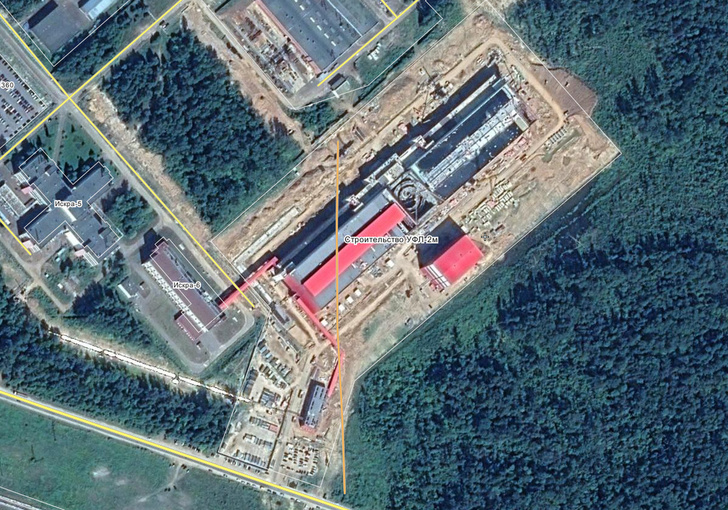https://sdelanounas.ru/blogs/104218/
Specialists of the Urals and the Kuzbass created mini-factories producing cheap synthetic oil from coal
The developers successfully tested a unique technology for the direct liquefaction of coal for production of synthetic hydrocarbon mixture — equivalent of oil. Moreover, the cost of the resulting fuel is much cheaper "natural". Use mini-mills are almost endless — from agriculture to utilities.
As the developers managed to create the current technology of coal liquefaction is suitable for mass implementation in the first place for small and medium business, as its implementation does not require significant costs and pays for itself quickly.
The first plant for the production of synthetic liquid boiler fuels from coal technology electroepilation processing of coal-water mixtures already manufactured and shipped to customers — a glass factory in Nampo (DPRK). Its capacity for end product 15 tons per day. Parallel to the already developed feasibility study on equipment for mini-production plant from coal to diesel fuel capacity of 100 tons per day for own technological needs of coal mining sites OOO "Promagroservice" (Novokuznetsk). Work began on the development of the project for auxiliary heating, power supply and ensure fuel of agro-Altai region.
Work on the implementation of the development carried out in cooperation:
— NP "South-Ural technical society" (Miass, Chelyabinsk region) is responsible for developing technical documentation, management of contractual relations, the organization of manufacture and supply of components.
— LLC "Kvant" (Novokuznetsk, the Kemerovo region) is the development of technology, production of electric-discharge installation, Assembly and factory testing of the kit, testing and commissioning.
— "NPO SPb EHK" (Saint-Petersburg) — is a technology partner, responsible for the promotion, duplication of development and active implementation at industrial enterprises of the country abroad.
It should be noted that the actual production of liquid fuel from coal in General is not a new thing. In different countries now employs more than 80 pilot plant of coal liquefaction. However, in industrial scale, these technologies are currently not used due to a number of reasons.
The main disadvantages of existing technologies for the liquefaction of coal due to low productivity of the process occurring at high pressures and temperatures, in the presence of catalysts, the need for production of hydrogen and oxygen, separation of the catalyst for reuse in the process, — says Igor Yakupov, Deputy Director of "South-Ural technical society" Miass, Chelyabinsk region. — Scale cost-effective production in this area begins from approximately half a million tons of liquid products per year, ie of the order of several million tons per year by source coal.
In this case, you need a huge investment, the need of which starts from the level of about one billion U.S. dollars with a payback period of 7-8 years and above. Clearly, such projects are long-term investment of world class players.That is why no country yet has not built a single commercial production of synthetic liquid fuel from coal. In this case, the appeal formula "gasoline from coal" does not leave in peace many producers. Therefore requests the development of technology to the experts for deep processing of coal delivered consistently. The economic feasibility of producing liquid fuels from coal is determined that sufficient reserves of coal in our country and commercial efficiency comparable to oil refining.
The main difference of the project from the existing methods of processing of coal consists in a significant reduction in unit costs, the cost of the equipment due to the exclusion of the processes occurring at high temperatures and pressures, exclusion of catalytic reactions. Technology is much cheaper and easier. There is no need to build entire factories with huge production cycle, to bear huge costs.
— Our equipment is quite compact, it allow cheap brown coal by treatment with two-phase coal-water environment with addition of heavy oil residue (TNO) in the cavitation field created by a pulsed high-voltage discharges. to process an analogue of oil, and to select analogs of gasoline, diesel fuel and fuel oil. Moreover, the cost of synthetic fuel, according to our calculations, will be three times less than obtained in the usual way, — said Igor Yakupov.
Raw material for the production is: coal — 50%; heavy residues of oil refining (TNO) — 23%, water 27%.For processing is supplied crushed coal — coal dust — to install mixing it is mixed with water and heavy oil residue (TNO), the mixture is processed in a homogenizer type rotor — cavitation-hydraulic disperser (Caged). After that, a homogeneous colloidal suspension is pumped to the installation elektrogidroudarnoy pulse processing, with the voltage on bit cell up to 60,000 V.
The output is neftebazovskiy product with a density of 0.95-0.96 g/cm3. To receive commercial oil from nefteyuganskogo product separated water and coal residue. Selected hydrocarbon fraction SUN density 0,825 g/cm3 is dispersed in the commodity group with their alternate selection.
Today, after manufacturing of experimental-industrial model installation capacity of coal processing of 15 tonnes per day, the developers embarked on the design and manufacture of plant for deep processing of coal capacity up to 50 tons per day. It poluavtomatizirovannuju processing line modular design, consistently performing grinding supplied from the coal storage of raw materials, mixing the crushed coal with water-fuel emulsion with obtaining a stable water-in-coal-fuel oil compositions directed to treatment in a flow reactor to produce liquid hydrocarbon fuel composition (equivalent to oil) and processing into marketable synthetic liquid fuels.
The developers explain that a particularly high impact of such installations is obtained at low production volumes. Low-cost mobile unit is quite applicable even in the far North, where the fuel has to carry thousands of miles away. It can be supplied close to where coal mining and on the spot to produce diesel fuel and gasoline. Such installations may use for disposal of coal sludge dumps in there environment, and production. In General, the possibility of using such mini-plants are almost endless — they include agriculture, small power, utilities.








